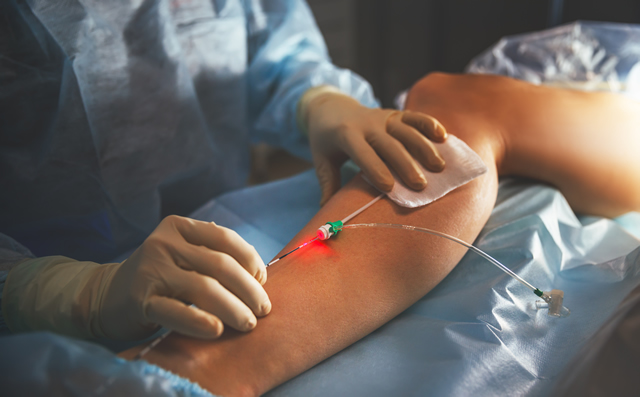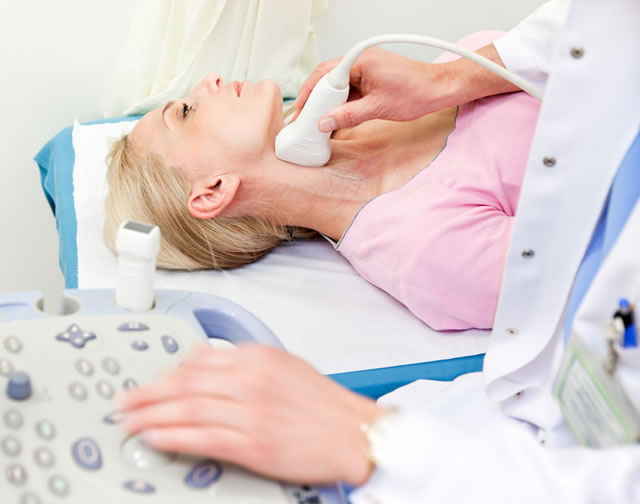Vascular Surgery
Vascular surgery involves treatment of conditions affecting the arteries and veins. The treatment of these conditions involves the management of risk factors, treatment with medication, and surgical procedures. The surgical procedures can be undertaken in the form of open surgery ( a traditional operation), or by endovascular (“inside the vessel”) techniques, such as angioplasty. Common vascular conditions include that can be investigated and managed by the Surrey Total Health team include varicose veins, aortic aneurysms, carotid disease, peripheral arterial disease and lymphoedema.


Venous disease
Varicose veins
Varicose veins are visible superficial veins on the legs, which are often tortuous and dilated. In many cases, affected people find them unsightly, and this can affect the way these people live their lives, particularly in the summer months. The dilated veins can be associated with symptoms, the most common of these being aching, cramping and heaviness in the legs. People affected can also experience considerable itching.
Varicose veins can lead to some medical issues, over and above their unsightly nature. The veins may become blocked with clot and become tender and inflamed (thrombophlebitis). This can be associated with an increased risk of deep venous thrombosis (DVT). The skin on the lower part of the leg can become flaky and inflamed (venous eczema). If untreated, brown discoloration and staining of the skin around the ankles can occur, which is the first indication that a venous ulcer may develop.
The treatment of varicose veins has improved significant in recent times. The “stripping” operation is outdated, with the current treatments rather closing the vein than removing it. The cause of varicose veins is, in almost all cases, failure of the valves in the veins, with blood thus refluxing down the vein. By closing the vein, this problem is resolved.
This “inside the vein” or endovenous treatment is minimal access surgery, and is associated with much better outcomes and much less recurrence that older stripping techniques. I am able to use a number of different techniques, including closing the vein using heat derived from a laser or radiofrequency probe (endothermal ablation), as well as using a glue (adhesive closure).The procedures are performed under ultrasound guidance in a day case setting, with early return to normal daily activities.
Arterial disease
Aortic Aneurysms
Aortic Aneurysms are dilatations of the aorta, the largest artery in the body. Abdominal aortic aneurysms are seen the more frequently than those in the chest. The main risk factors for developing an aneurysm are smoking, high blood pressure and high cholesterol levels. They occur more commonly in men, and tend to develop later in life.
The main problem with aortic aneurysms is that as the aneurysm increases in size, it becomes more likely that the aneurysm will burst (rupture). This is an extremely serious occurrence, leading to death in approximately half of cases. For this reason, appropriate management when a person is diagnosed with an aneurysm is vital. In most cases, aneurysms are treated when they reach approximately 55mm in diameter.
Most aneurysms can now be treated using endovascular techniques, with only small incisions made in each groin. A stent graft is placed inside the aneurysm, sealing off the dilated portion of artery.
Peripheral arterial disease / Claudication
Narrowing or blockages in the arteries in the legs is called peripheral arterial disease. Most commonly, it leads to cramping in the calves after a period of walking, with this symptom being called claudication. The pain disappears after a short rest, only to return after a period of walking.
In a small percentage of cases, peripheral vascular disease can lead to severe problems with the circulation in the legs, called Critical Limb Ischaemia (CLI). People who develop CLI have constant pain at rest, and may have skin breakdown and ulcers. This is a serious condition, and there is a significant risk of amputation being required. People who have diabetes are at greater risk of developing CLI.
The treatment of peripheral vascular disease involves the modification of risk factors (smoking, high blood pressure, high cholesterol), and exercise programmes. In more severe cases, angioplasty or open bypass surgery may.
Strokes, TIA’s and carotid disease
The carotid arteries are the two main arteries that supply blood to the brain. A proportion of strokes and “mini-strokes” are caused by narrowing of one of these important vessels. “Mini-strokes” are correctly known as Transient Ischaemic Attacks or TIA’s.
During investigations undertaken when someone suffers a stroke or TIA, the carotid arteries are imaged using ultrasound and/or CT scans. If a significant narrowing is found in the carotid arteries, and the symptoms can be attributed to this, then it may be appropriate to operate on the vessels. This procedure is called a carotid endarterectomy, during with the narrowing is removed. This should be performed as soon as possible after the onset of symptoms, as this is when the benefit of the operation is the greatest.
Lymphoedema
Lymphoedema occurs when a limb or limbs swell up due to the failure of drainage of lymph. Lymph is fluid that is collected from between the cells, which drains into small tubes (lymph capillaries) which drain into lymphatics. These are similar to blood vessels, but smaller.
Any disruption of this lymphatic symptom may lead to lymphoedema, with significant swelling of the limb or limbs. This may be hereditary (Primary lymphoedema) or due to damage to the lymphatics (secondary).
Thorough investigation of people presenting with symptoms in keeping with lymphoedema is important, as the symptoms may be due to other conditions. Furthermore, lymphoedema and other conditions may co-exist. Treatment of these other disorders may improve the leg swelling.

Specialists
Get in Touch
The information you provide in this contact form is emailed directly to Surrey Total Health. Your information is not stored by this website. We only use your details to respond to your enquiry and do not share them with any third parties. You can read further on how we store and process data in our privacy policy.
